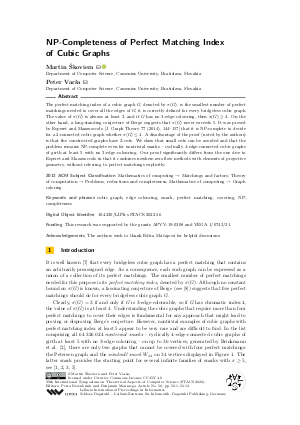LIPIcs.STACS.2022.56.pdf
- Filesize: 0.77 MB
- 12 pages

 Creative Commons Attribution 4.0 International license
Creative Commons Attribution 4.0 International license










Feedback for Dagstuhl Publishing